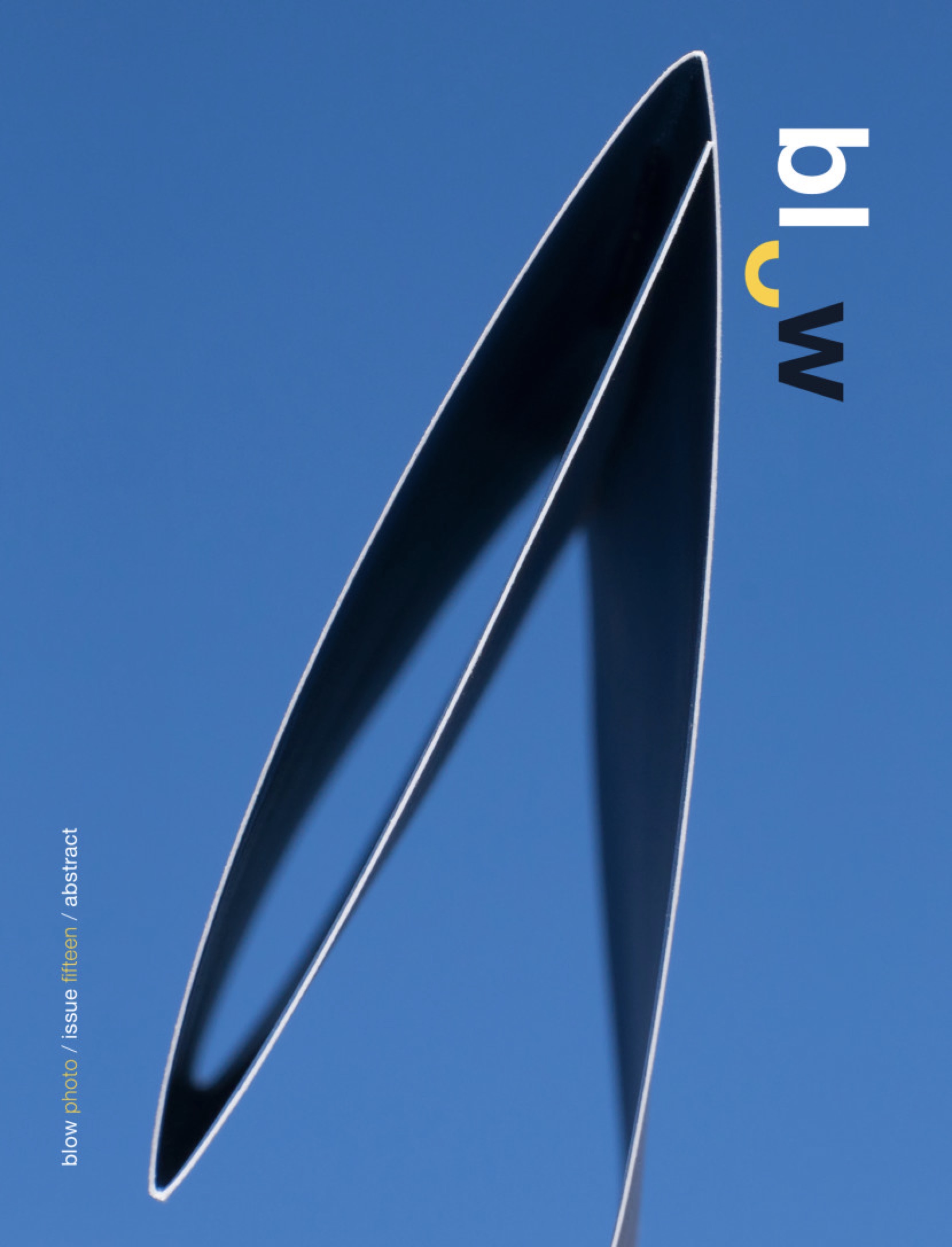



a letter from the editor / issue fifteen / the theme of issue fifteen is ‘abstract’. first some definitions. abstraction was an ongoing theme of the modernist century (1860s-1960s). abstraction required that a work have its basis with a real object(s). today, the meaning has stretched to include abstract art imbued with symbolic meaning, abstract art that is socially concerned, and abstract art that captures vision of things that have not yet been seen. in photography abstract work often reflects on the tools and process of photography. but let’s step back a moment. what is abstract art to the common person? ask someone passing on the street for their definition of abstract art and you might hear the words enjoyable, confusing, boring, decorative. those little white plaques that sit alongside abstract art are notoriously unread. at its worst abstract art has been accused of being anti aesthetic and a poor form of discourse. an alternative viewpoint is that the consumer of abstract art is experiencing a type of therapy, as philosopher alain de botton might say. in everyday life we hide our insanity. within the bounds of contemplating abstract art our insanity fits right in. this is calming and can be profoundly inspiring. we may have to concede that the definition of abstract art is shared. the physicist niels bohr summed things up perfectly when he said ‘the opposite of a fact is falsehood, but the opposite of one profound truth may very well be another profound truth’. abstract art can truly be both the most essential and the most non essential of things. this issue has a number of exceptional artist that cover the length and breadth of abstract art photography. andrea grützner uses the movement of light and precise shadows to symbolically reflect on her childhood memories. jan rosseel in his series ‘on the aesthetics of violence’ questions the relationship between politics and aesthetics, history and memory in images of violence. abstract art can sometimes be the only medium to approach such complex issues. richard caldicott creates custom negatives by cutting and splicing geometric shapes from card. he emphasizes the performative act of the making. our cover artist, brenda biondo in her ‘paper skies’ again deals with process. she examines the perception of color and form within photographs, frequently punctuating her work with quotes from frank stella, mark rothko and georgia o’keeffe. we hope that we have prepared you for issues fifteen. enjoy. 第十五期/十五期主题的一封信是“抽象的”。 首先是一些定义。抽象是现代主义世纪(1860年代至1960年代)的一个持续主题。 抽象要求作品的基础是真实的对象。今天,意义已经延伸到包括充满象征意义的抽象艺术, 具有社会意义的抽象艺术,以及捕捉尚未被看到的事物的视觉的抽象艺术。 在摄影中,抽象作品往往反映在摄影的工具和过程中。 但让我们退后一步。什么是普通人的抽象艺术? 要求有人在街上路过他们对抽象艺术的定义, 你可能会听到令人愉快,令人困惑,无聊,装饰的话。 那些与抽象艺术并列的小白色斑块是众所周知的未读。 最糟糕的抽象艺术被指责为反美学和一种糟糕的话语形式。 另一种观点是抽象艺术的消费者正在经历一种治疗, 正如哲学家阿兰德波顿所说的那样。在日常生活中,我们隐藏着疯狂。 在考虑抽象艺术的范围内,我们的疯狂适合于。这是平静的,可以深刻鼓舞人心。 我们可能不得不承认抽象艺术的定义是共享的。 当物理学家尼尔斯·波尔说“事实的对立面是虚假的, 但与一个深刻的真理相反时,很可能是另一个深刻的真理”。 抽象艺术确实可以成为最重要和最不必要的东西。 这个问题有许多杰出的艺术家,涵盖了抽象艺术摄影的长度和广度。 andreagrützner利用光线和精确阴影的运动象征性地反思她童年的记忆。 jan rosseel在他的“暴力美学”系列中质疑政治与美学, 历史和暴力形象记忆之间的关系。抽象艺术有时可以成为解决这些复杂问题的唯一媒介。 richard caldicott通过从卡片切割和拼接几何形状来创建自定义底片。 他强调制作的表演行为。 我们的封面艺术家布兰达比奥多在她的“纸天”中再次处理过程。 她在照片中检查了颜色和形式的感知, 经常用frank stella,mark rothko和georgia o'keeffe的引用来标记她的作品。 我们希望我们为十五期的问题做好准备。请享用。